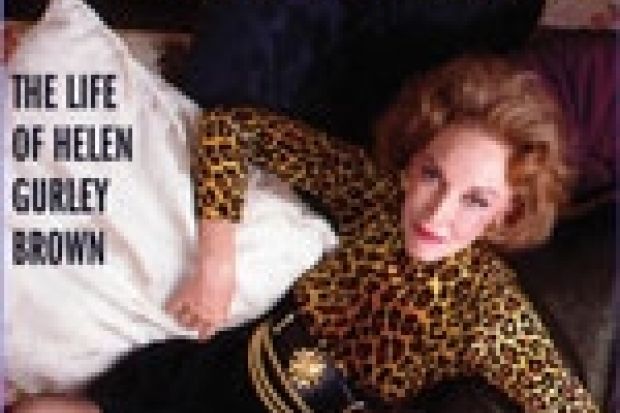Having been a lifelong advocate of cycling proficiency lessons for fish, I was delighted to discover this sharp new look at an old feminist role model. Jennifer Scanlon is one of the few to have celebrated the alternative and pragmatic feminism that Helen Gurley Brown proposed, and to have understood the impact her Sex and the Single Girl made on those of us to whom it gave permission to be victims neither of a phallocentric and oppressive culture nor of our own guilty sexual desires. It screamed into my life in 1962 when I was ready for that liberating message, at 17.
Scanlon correctly and carefully positions Gurley Brown alongside the dour political feminism of Betty Friedan. Where Gurley Brown refused to be oppressed, believing that clever women could take pleasure in working for a living rather than filling in the time with work until a man saved us from drudgery, Friedan demanded that we stand shoulder to shoulder at the barricades. In fact, most multitasking women adopt both these positions simultaneously.
The author usefully explores the reality of being a working woman in the 1960s, rather than a college graduate. As Gurley Brown knew, working life for the single woman, however gifted, could be menial. Although she was the daughter of two teachers, and her father had entered the state legislature, she tended to overemphasise her working-class roots and her family's fight for survival during the Depression after her mother was widowed and her sister contracted polio. Instead of a degree, she obtained secretarial qualifications to support them and herself, becoming a servant of an almost entirely male professional workforce, until one of her advertising agency bosses gave her a chance to write copy. She became one of the most successful creatives in her field - marrying, finally, and on her terms, at the age of 37 - and moving on to a writing career and then the editorship of Cosmopolitan.
Generations of clever women were bypassed in a system that shovelled us into offices and staff rooms - only 1 per cent of my girls' grammar school intake made it to university. Gurley Brown understood and spoke for us. She acknowledged that her "Cosmo girls" were women who every day had to wear uniforms or work dress. They were not allowed individuation. So an injunction from the editor to slap on the slap was as liberating as burning a bra. She was a postmodernist, a third-wave feminism pioneer and a populist before that term had credibility.
Scanlon's book lets us view the 1960s through that postmodernist prism. Gurley Brown's message was far from perfect. The inflexibility of her polemic stance, and the repetitious nature of its message through her editorship of Cosmopolitan, can grate on some who wish that she could move on from desiring and advocating an anorexic body and a sculpted face. Scanlon struggles to find variations on Gurley Brown's set themes. Another limitation is the rather over-informative text with socio-political resonances into all disciplines. While the endnotes are a treasure trove, do we really need a potted history of paperback production or an investigation into CinemaScope in the main body of the work? Perhaps we do.
Ultimately, Gurley Brown's achievement, as evidenced and reclaimed by Scanlon, is that she made a career of the life she was compelled to lead, and sold that on as a lifestyle choice - and succeeded. And that, in itself, is sexy.
Bad Girls Go Everywhere: The Life of Helen Gurley Brown
By Jennifer Scanlon
Oxford University Press
288pp
£15.99
ISBN 9780195342055
Published 25 June 2009
Register to continue
Why register?
- Registration is free and only takes a moment
- Once registered, you can read 3 articles a month
- Sign up for our newsletter
Subscribe
Or subscribe for unlimited access to:
- Unlimited access to news, views, insights & reviews
- Digital editions
- Digital access to THE’s university and college rankings analysis
Already registered or a current subscriber? Login
